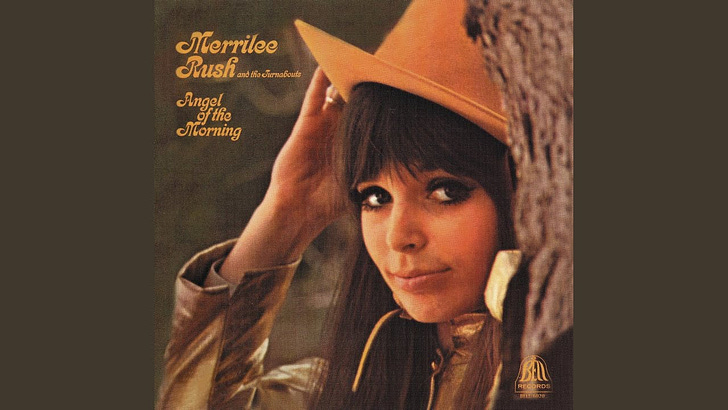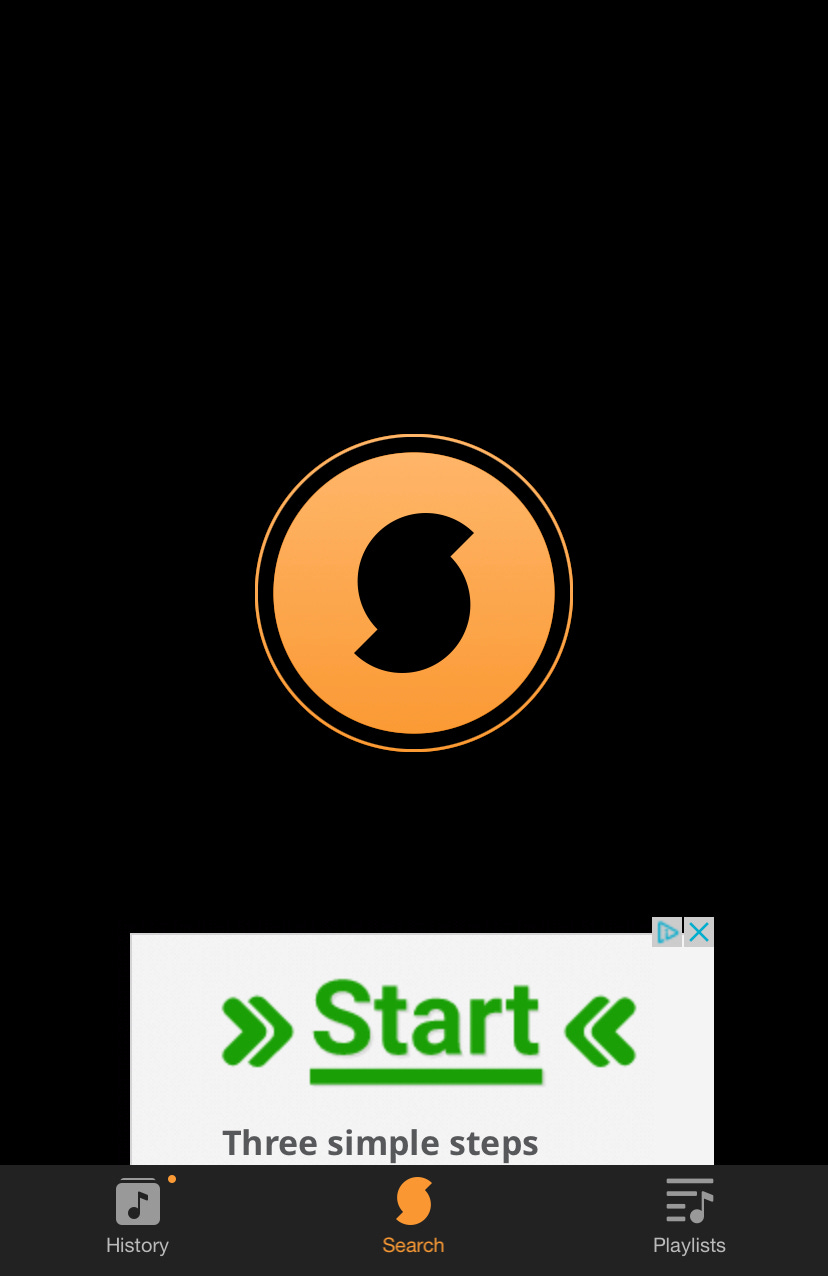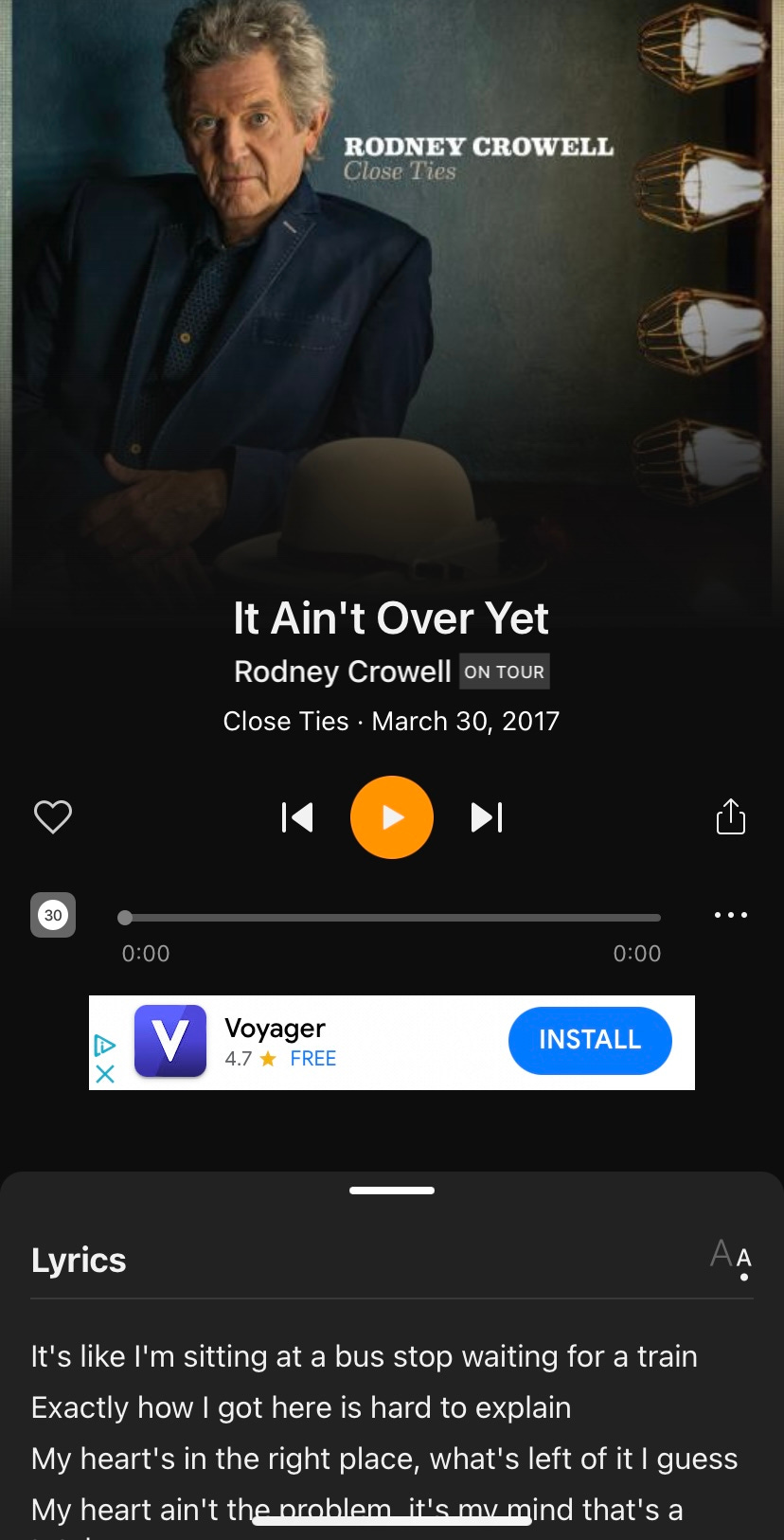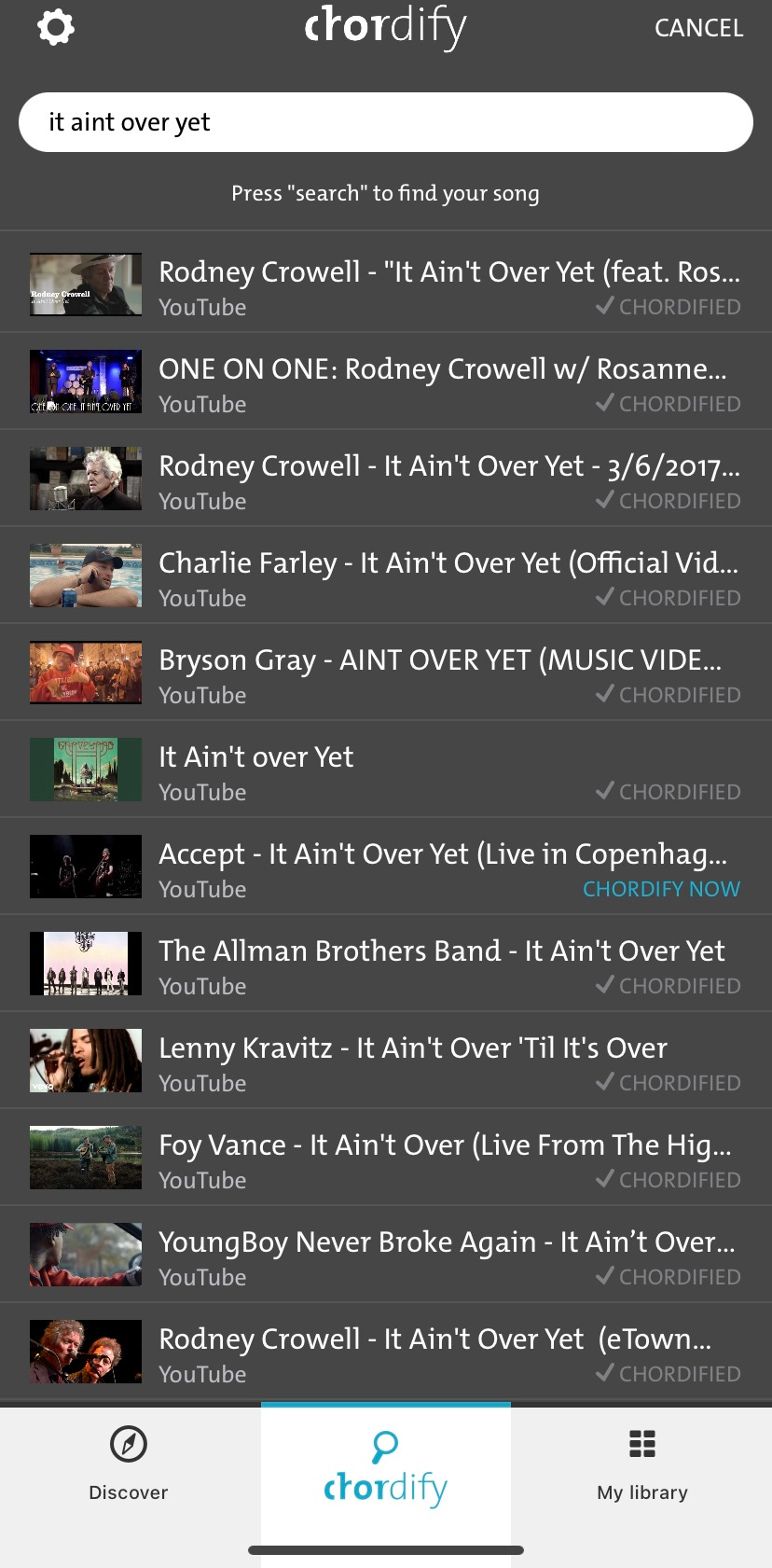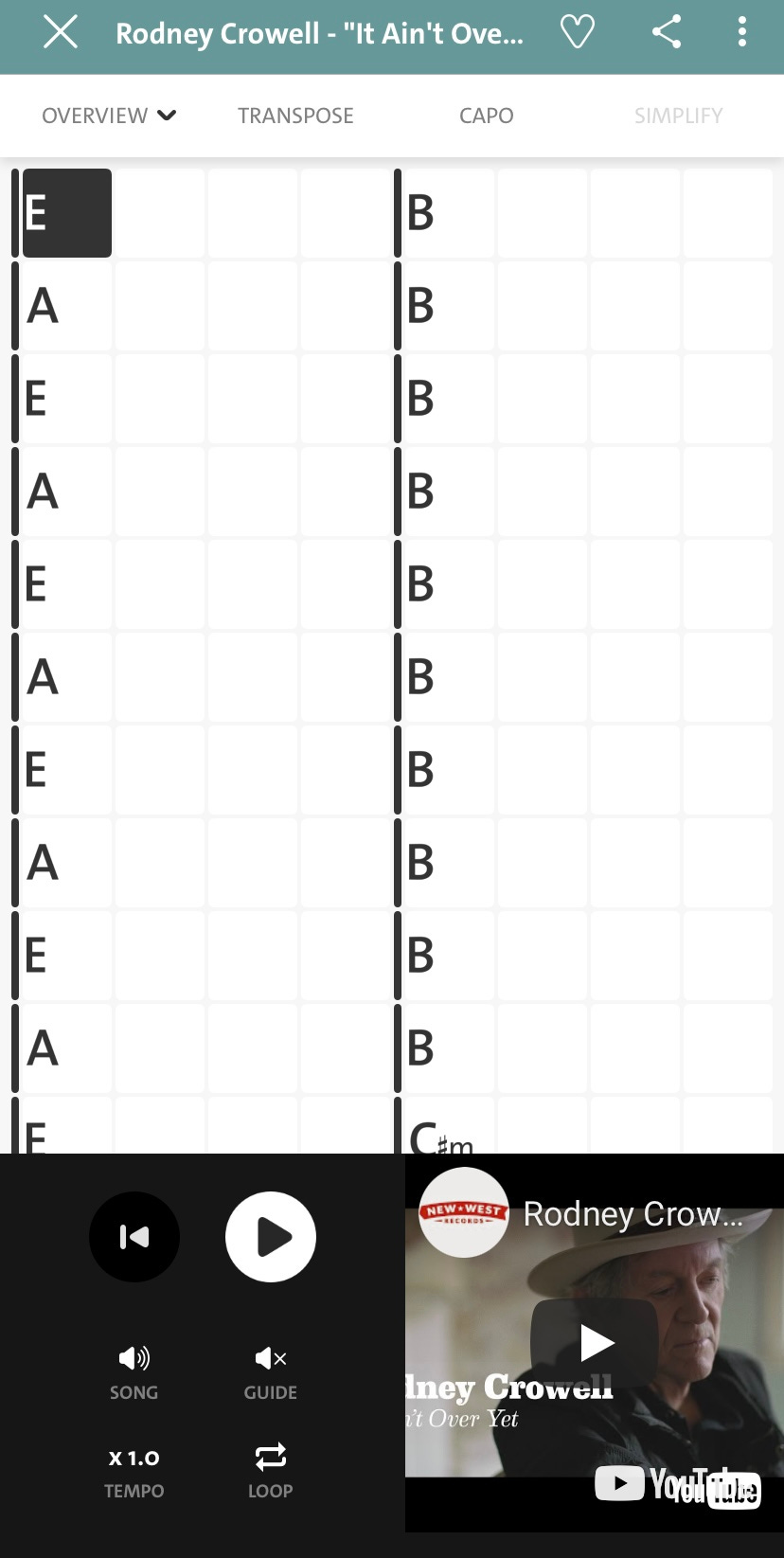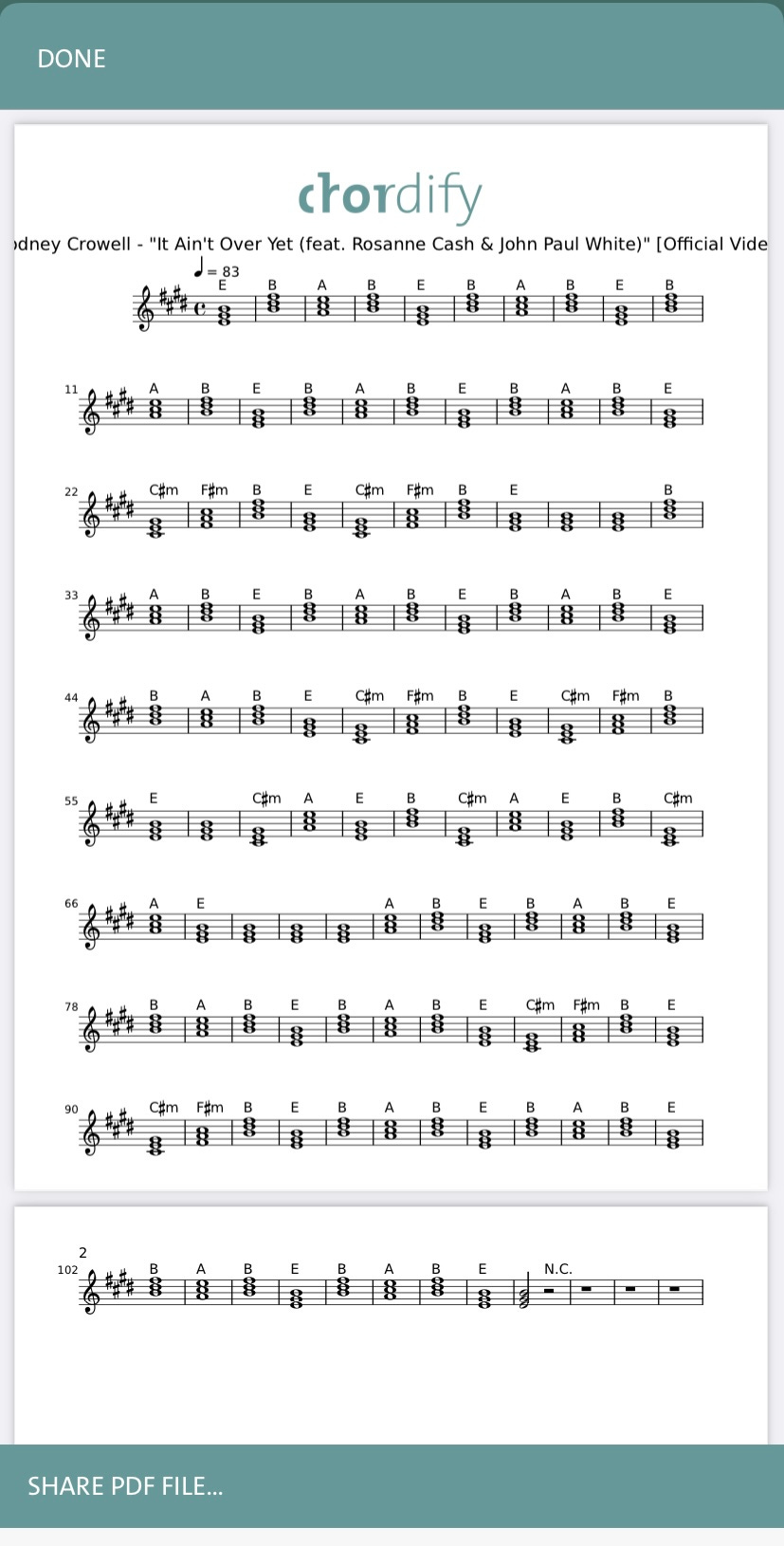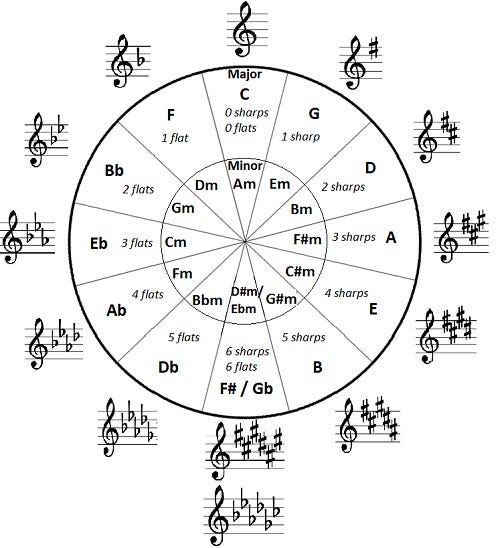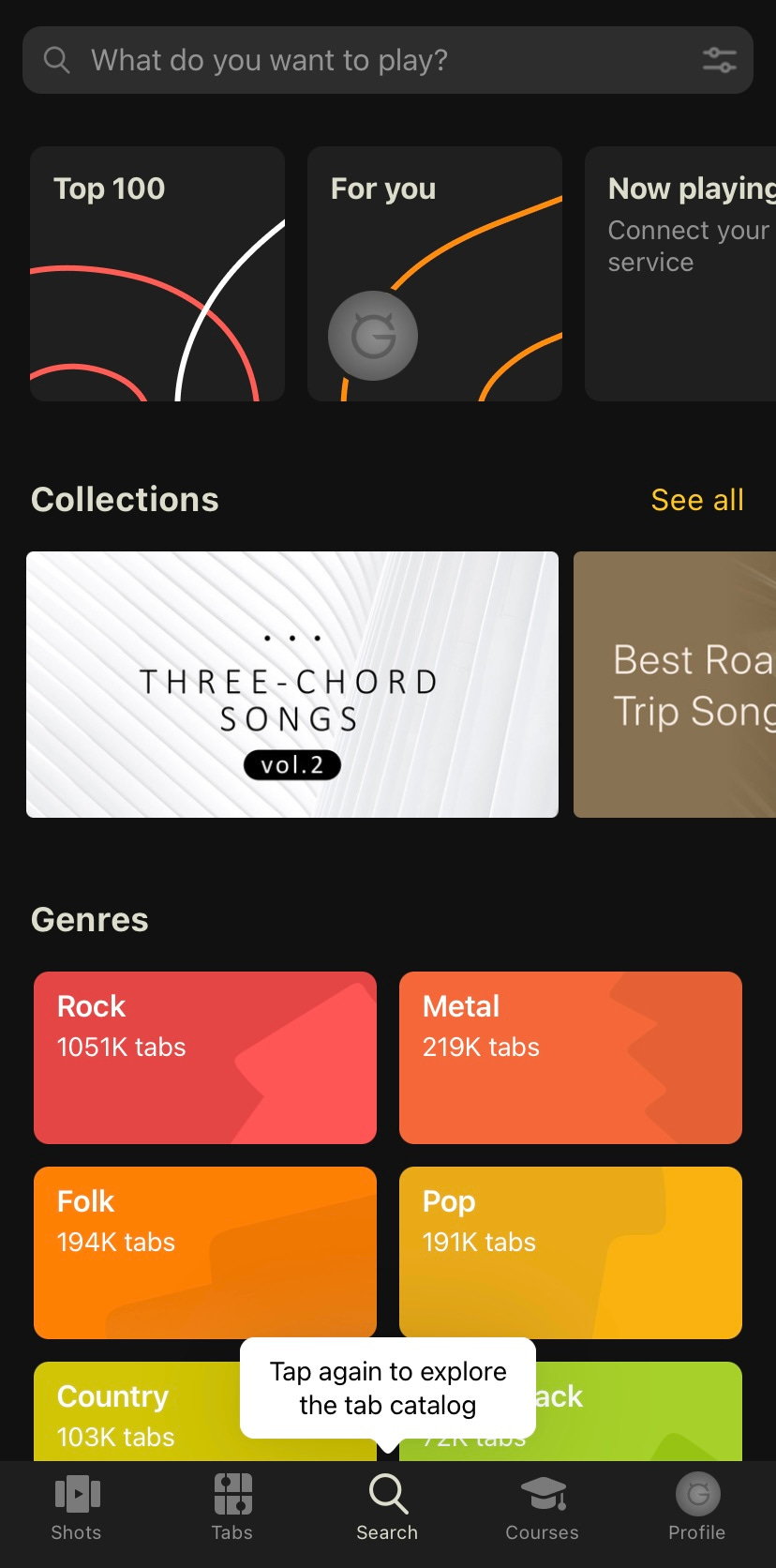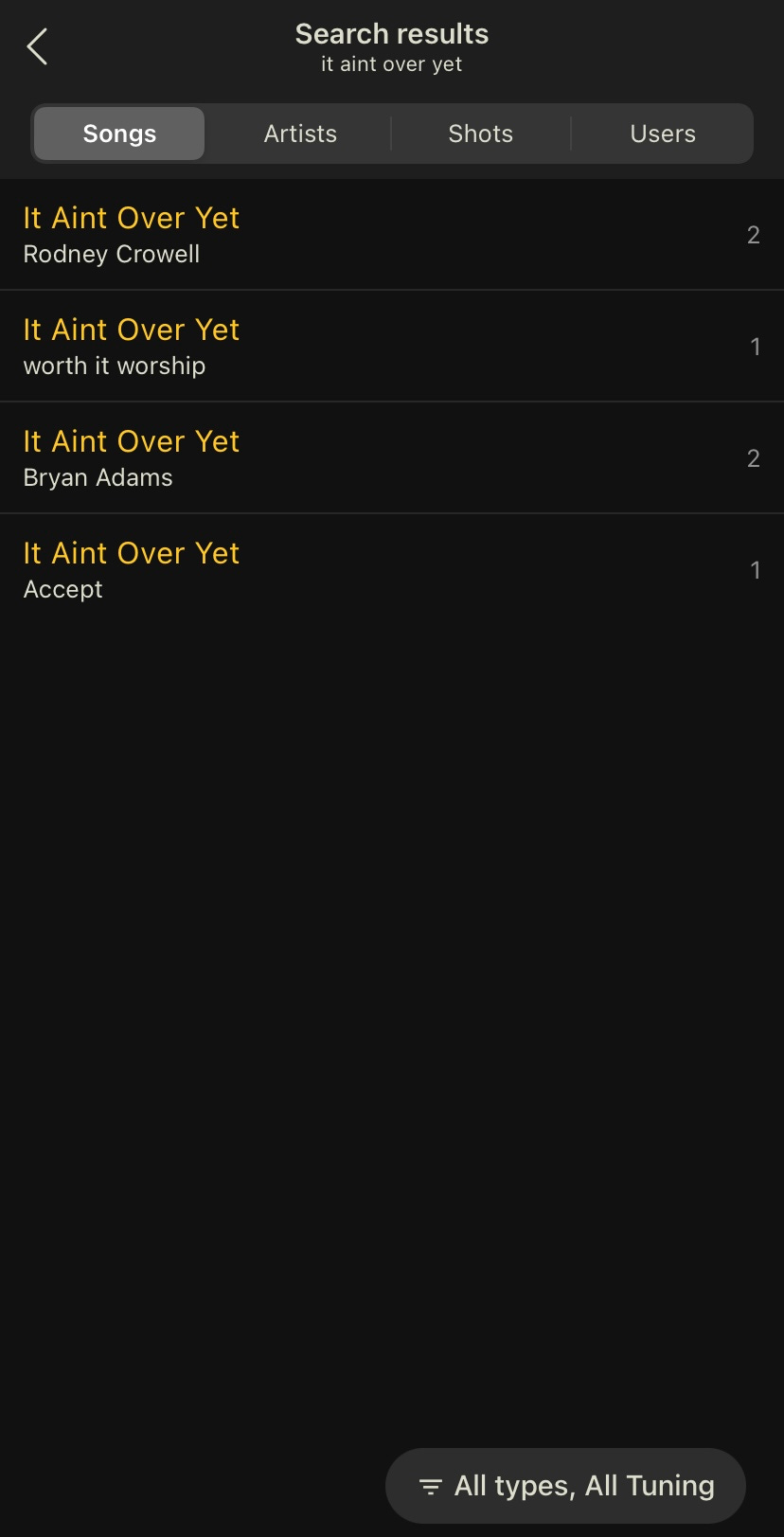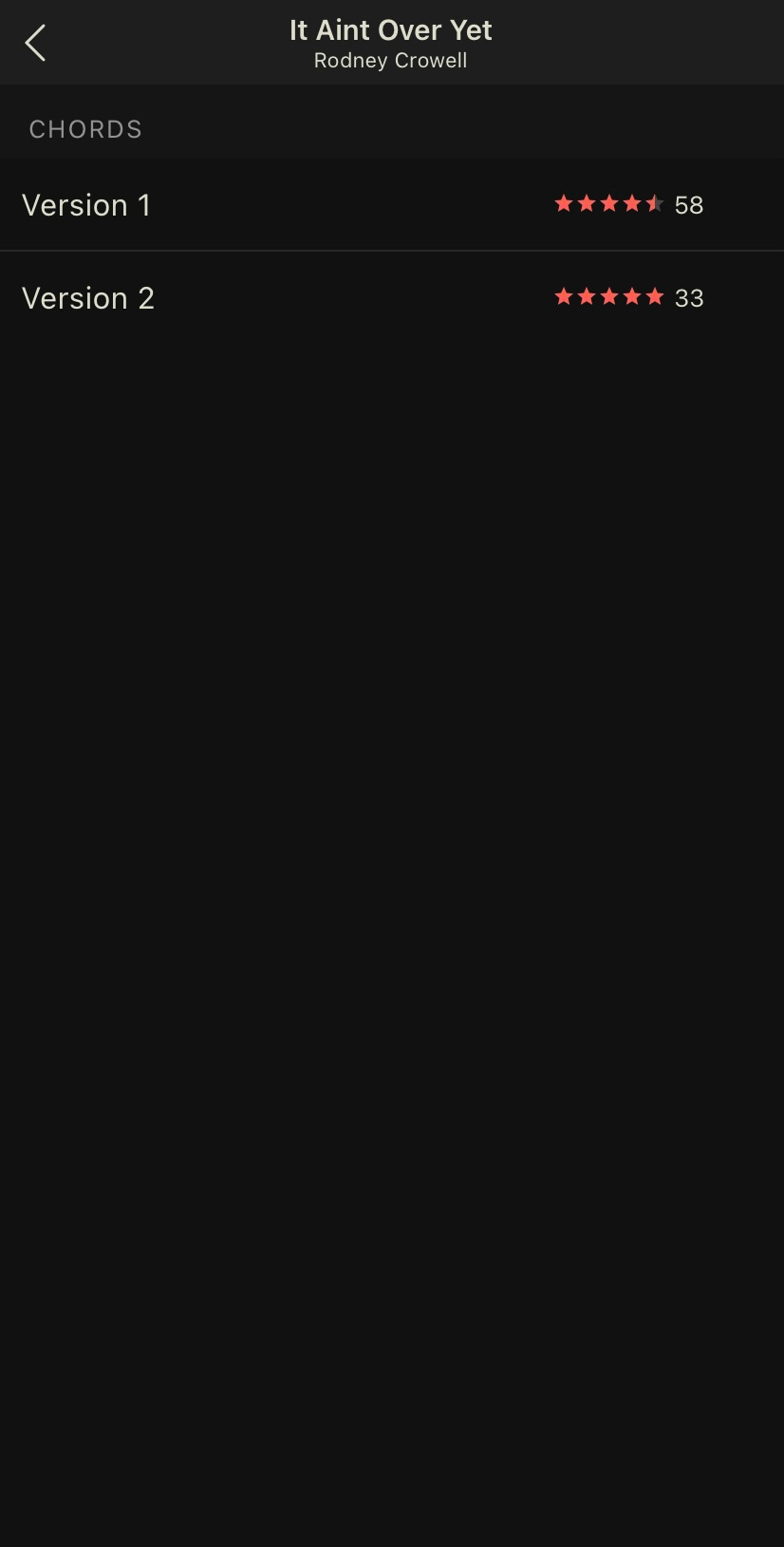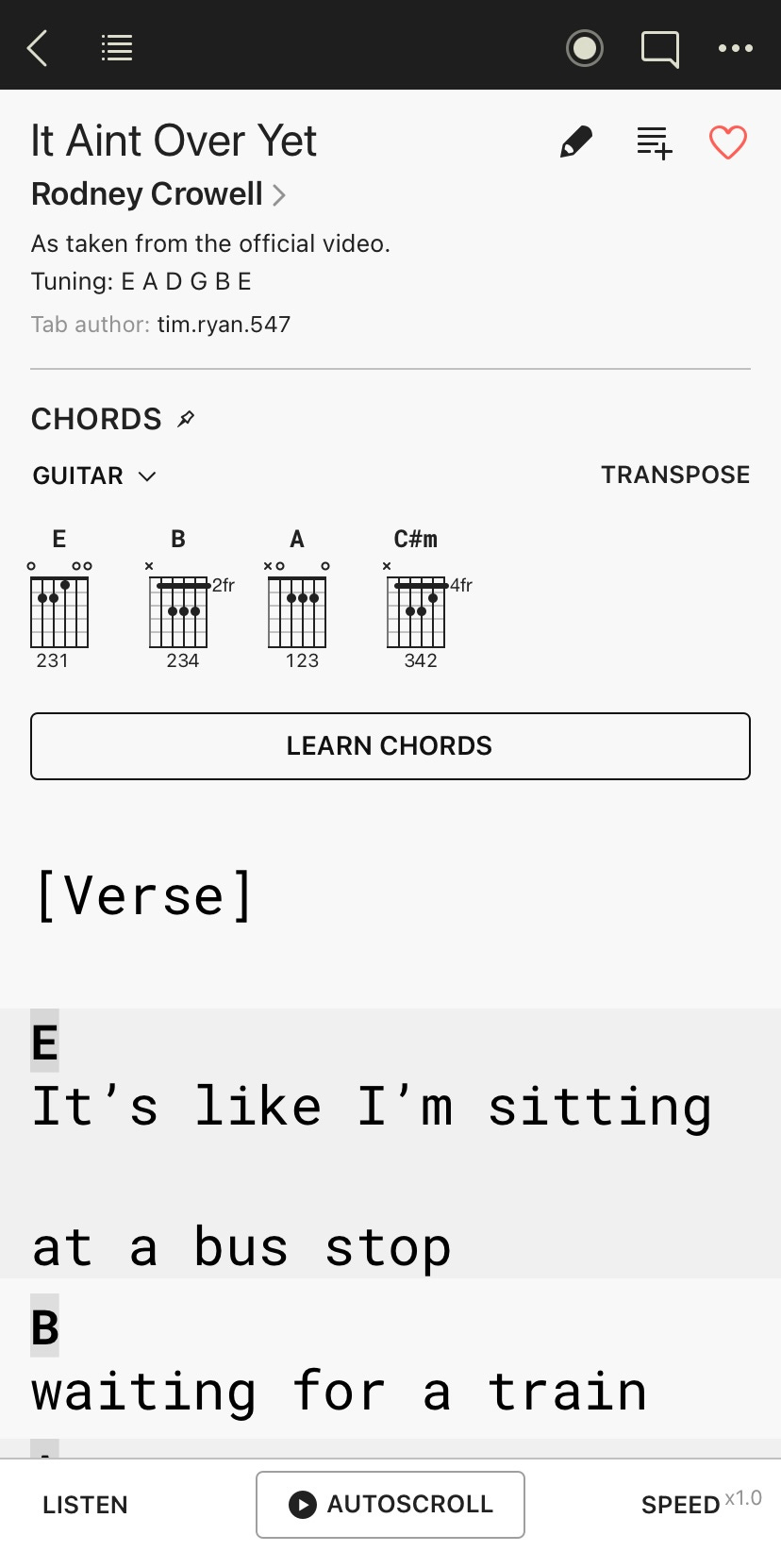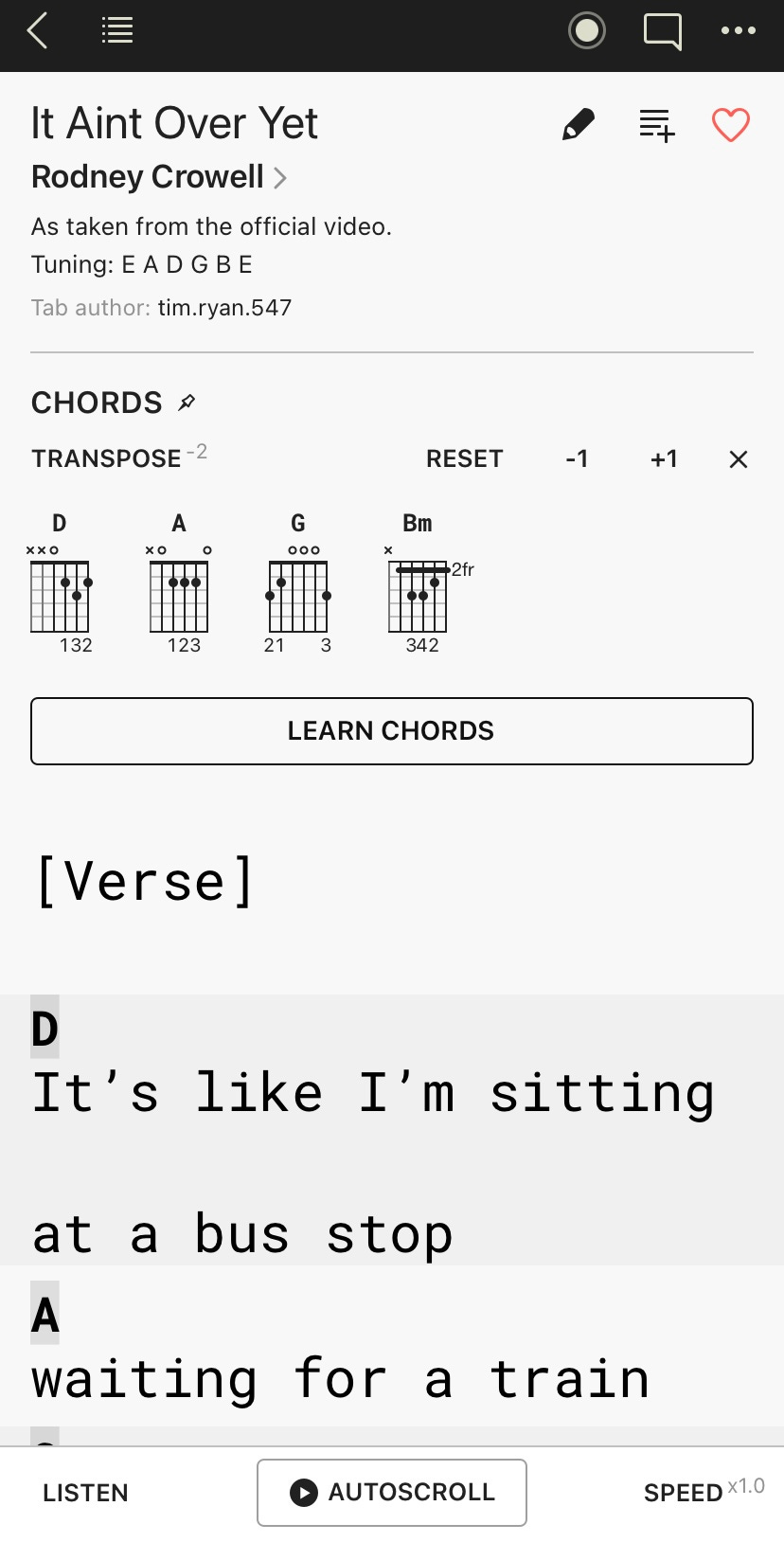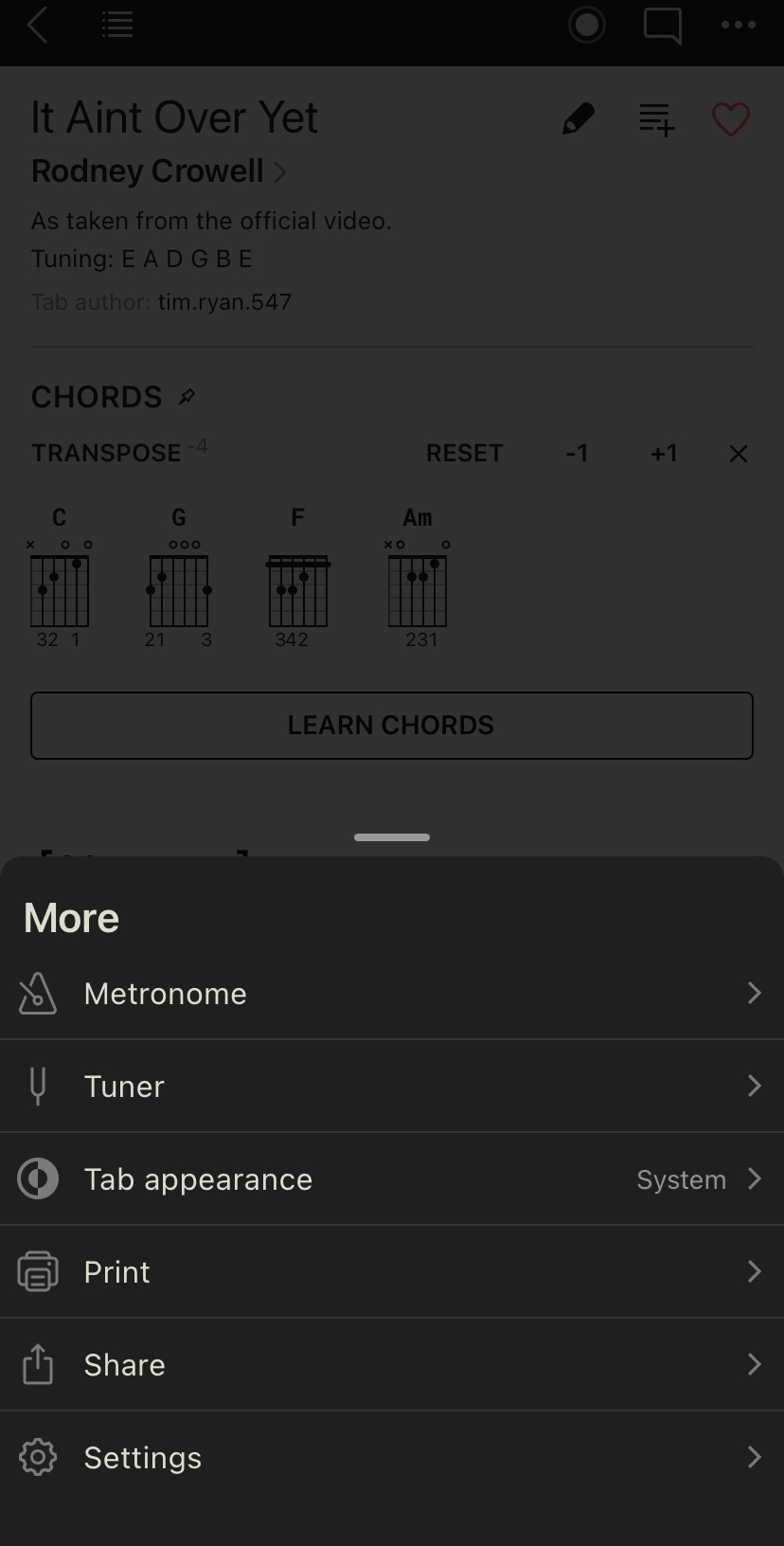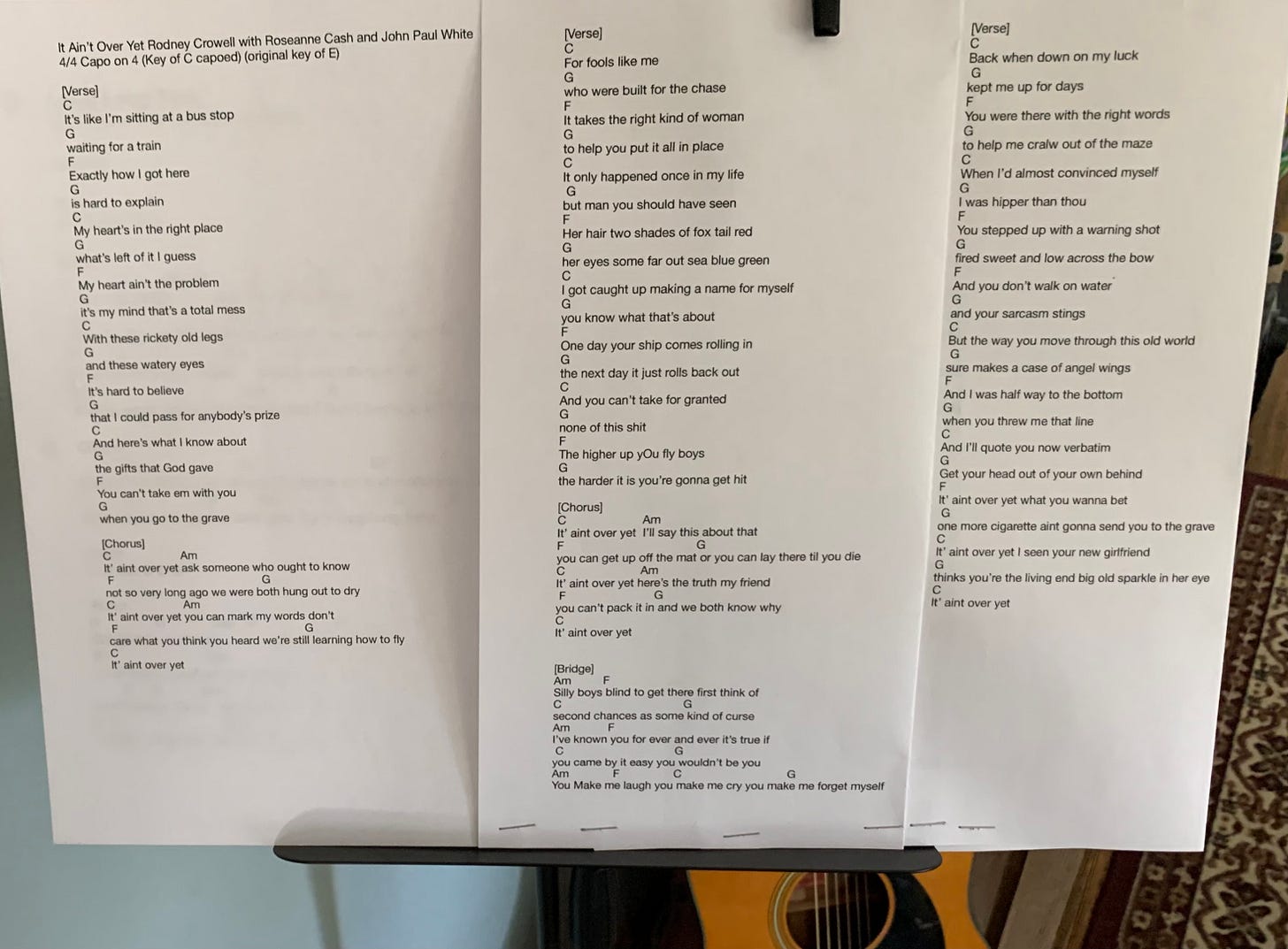Last week’s Bonus Round featured Chrissie Hynde on “Friends” as Stephanie Schiffer playing and singing the Merrilee Rush song “Angel Of The Morning” - as I mentioned yesterday. I meant to include links to both, forgot, including them here:
Now on to Yesterday’s Bonus Round: The Question: When is it over?
The Answer: “It Ain’t Over Yet” is a song written by Rodney Crowell, performed by him, and features Roseanne Cash and John Paul White. It’s from Mr. Crowell’s 2017 album “Close Ties” via New West records, co-published by Coolwell Music and Sheltered Music. ASCAP is the PRO for both Mr. Crowell and the co-publishers.
I included more song information in this Bonus Round answer because I want to use this song as an example for today’s post on how to find songs to play, and where to go to find and print chord charts so you can learn them. Since I’m using it for educational purposes, and this SubStack is free, I’m not making money off of the work of others, but a note of caution - if you download, copy and then perform or record the work of others and earn money from those efforts, you do owe the copyright holders (composers, publishers, master recording owner) royalties when you cover their work. Want to learn it at home and play for friends? Have fun!! Getting paid at a local coffee shop or festival? Make sure you’ve filled out a cue sheet for the songs you’re covering. Recording a cover? More complicated, but a distributor like Distrokid or CD Baby (or others) can do a lot of the work for you.
Here’s the YouTube video of “It Ain’t Over Yet”:
Lotta nice guitars in there along with a great song. Notice Rodney Crowell is capoed on 2, and the other male guitarist (I assume that’s John Paul White) is capoed on 6. Interesting.
So, the apps I think are indispensable for musicians to learn new songs start with SoundHound. If you’re hearing this song somewhere and don’t recognize it, but want to, open SoundHound, you’ll get a screen like this:
Press the big orange button with the stylized “S” (it will be sort of pulsing), and let your phone listen. You should get a result like this:
A lot of information there: song title, artist, album, release date, and interestingly, the information that Mr. Crowell is currently touring, along with some song lyrics.
Now that we know the title and artist, let’s go to Chordify. Entering “It Ain’t Over Yet” in the search function yields this screen:
The first result is the song, and it’s been “chordified”!! Click on it and you’ll get this screen:
Those are the chords for the song in the original key the song was written in, the Key of E. We can confirm that by clicking on the 3 vertical dots in the upper right corner. Select “Export to PDF” and we see this:
This isn’t particularly useful except for the signature information. We can see the key signature, 4 sharps, which tells us it’s in the Key of E. How? Remember our old friend, the Circle of Fifths?
Look towards the lower right - you’ll see a key signature with 4 sharps that corresponds to the Key of E (it even says “4 sharps”). That’s how you know.
Back to the PDF. See the capital “C” in the signature? That stands for “Common Time”, which is 4/4 time. That means (top number) equals 4 beats to the measure (also called a “bar”) and the bottom number 4 means the quarter note gets the beat. So four 1/4 notes to the measure, or two 1/2 notes, or one whole note. Notice the PDF score shows only whole notes. Not useful for guitarists. How do we know the tempo? Notice the quarter note =83 just above the signature - that’s the tempo. Set a metronome or “click” to 83 beats per minute (BPM) and that’s the tempo the songwriter wrote to.
Great! Now we’re off to the Ultimate Guitar app. The search page looks like this:
In the space at the top, enter the song you’re looking for, we get this when we enter “It Ain’t Over Yet”;
1st result!! Great! Click on it for this:
I chose the most popular version (remember Ultimate Guitar is all user created, so that means this version got the most upvotes).
And there’s a chord chart to start with, in this case created by a user apparently named Tim Ryan - good for him!! The 4 chords in the song match the chordify version, so we’re in pretty good shape - but remember Mr. Crowell was capoed on 2 in the YouTube video! So, using the “Transpose” feature in UG, we go down 2 semitones to get this:
OK, these chords are a bit easier, as long as we’re capoed on 2, we can use the DMaj chord shapes, and still be in the Key of E. That’s why we transposed a negative 2 semitones - the Key of DMaj is 2 semitones lower in pitch than the Key of EMaj. If you want really easy chords, capo on 4 and you’re playing CMaj “shapes” while still in the Key of E.
I know all of that can be confusing, but think of which actual notes your fingers are playing on the fretboard when your capo is at a certain fret rather than what the familiar “shape” is named and you’ll start to see it. Place your fingers in a CMaj “shape” with the capo on 4 and count through the note names down from the nut to where your ring finger is in the classic open C “shape” on the A string. It’s an E. The rest of the fretted and open strings will be some combination of E-G#-B, the triad which forms EMaj.
Ok, so now we need a printed chord chart to rehearse the song from.
You could use the Chordify moving scroll, but the lyrics aren’t shown, so a printed chord chart gives you both.
In UG, I click the 3 horizontal dots in the upper right corner to get this:
I always click “share” rather than “print” and copy to some type of word processing app. The reason is converting from PDF to an editable format can “misplace” chords due to spacing being read differently in a word processing app. It’s an extra step, but once in your word processor, check the chord placement against the UG chart and make any corrections. Also, this is the time to decide if you want sections to “break” over a page. I don’t, so I edit to make certain the verses, choruses and bridge (and anything else) each begin and end on the same page. You’re mileage may vary. When you’re sure they match, and it’s the way you prefer to see it, save and print it. I print vertically in one column on 8x10 paper, but others prefer several columns on one sideways 8x10 or longer page. Your choice. I usually end up with a 2 or 3 page chart that I staple together.
This is what my chord chart for today’s song looks like on my music stand, ready to learn - note the header information:
So I’m apparently at or near the limit for Gmail length without truncating, so I’m going to stop there with no Bonus Round today.
Cheers, and keep playing!!
Michael Acoustic


